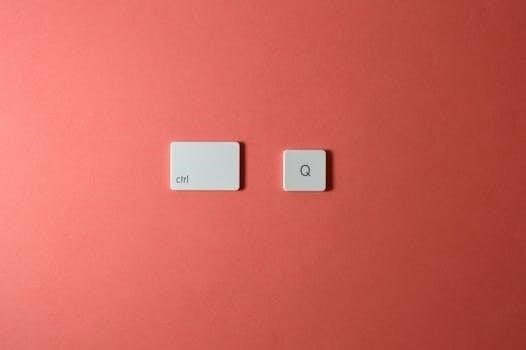piecewise function examples with answers pdf
Category : PDF
Piecewise Function Definition
A piecewise function is a function defined by multiple sub-functions, each applying to a specific interval of the domain. These functions use different formulas for different input ranges. Think of it as a rulebook where the applicable rule depends on the specific input value. For example, tax brackets function like this;

Domain and Range of Piecewise Functions
Understanding the domain and range of a piecewise function is crucial for analyzing its behavior. The domain is the set of all possible input values (x-values) for which the function is defined. For piecewise functions, the domain is often defined by the intervals specified for each piece. To find the domain, examine each piece’s interval and combine them.
The range is the set of all possible output values (y-values) that the function can produce. Determining the range of a piecewise function involves analyzing the range of each individual piece within its specified interval. It’s important to consider whether the pieces connect seamlessly or if there are any “jumps” or discontinuities.
If the pieces connect smoothly, the range can be determined by finding the minimum and maximum y-values across all pieces. However, if there are discontinuities, the range will be a combination of the ranges of each individual piece. Remember to pay close attention to the endpoints of each interval and whether they are included (closed circles) or excluded (open circles) as this will affect the overall range of the function. Visualizing the graph of the piecewise function can be extremely helpful in determining both its domain and range.

Graphing Piecewise Functions
Graphing piecewise functions involves plotting each piece separately over its specific interval. Pay close attention to endpoints, using open or closed circles to indicate inclusion or exclusion. The result is a graph composed of distinct segments, each representing a different function rule.
Step 1⁚ Identify Intervals
The first crucial step in graphing a piecewise function is to carefully identify the intervals over which each sub-function is defined. These intervals are typically specified using inequalities, such as x < 0, 0 ≤ x ≤ 2, or x > 2. Each inequality corresponds to a specific “piece” of the function and dictates where that piece should be graphed.
Accurately determining these intervals is paramount, as it establishes the boundaries for each sub-function. Misinterpreting the intervals will inevitably lead to an incorrect graph. It is essential to pay close attention to the inequality symbols used, distinguishing between strict inequalities (e.g., <, >) and inclusive inequalities (e.g., ≤, ≥).
Strict inequalities indicate that the endpoint of the interval is not included in the domain of that particular sub-function, while inclusive inequalities signify that the endpoint is included. This distinction is critical when marking endpoints on the graph, using open circles for strict inequalities and closed circles for inclusive inequalities.
Essentially, this step is about understanding the “when” and “where” for each part of the function. When does each formula apply, and where on the x-axis does it live?
Step 2⁚ Graph Each Piece
Once the intervals are clearly defined, the next step involves graphing each sub-function independently over its corresponding interval. This means treating each piece of the function as a separate entity and graphing it as if it were a standalone function, but only within the boundaries of its specified interval.
For example, if one piece of the function is f(x) = x + 1 for x < 0, you would graph the line y = x + 1, but only for the values of x that are less than 0. The rest of the line is ignored for this piecewise function.
The techniques used for graphing each piece will depend on the type of function involved. Linear functions can be graphed using their slope and y-intercept, while quadratic functions may require finding the vertex and intercepts. For more complex functions, creating a table of values within the interval can be helpful.
Remember, each piece is only graphed within its designated interval. It is also crucial to maintain accuracy in plotting points and drawing the graph, as even minor errors can lead to a misrepresentation of the piecewise function.
Effectively, you’re creating several mini-graphs. The result is a complete, but partitioned, graph.
Step 3⁚ Indicate Endpoints (Open vs. Closed Circles)
After graphing each piece of the function, it’s crucial to accurately represent the endpoints of each interval. This is done using open and closed circles.
A closed circle (filled-in circle) indicates that the endpoint is included in the interval. This occurs when the inequality defining the interval includes an “equal to” component (≤ or ≥). For instance, if a piece is defined for x ≤ 2, the point on the graph where x = 2 would be marked with a closed circle, signifying that this point is part of the function.
Conversely, an open circle (hollow circle) indicates that the endpoint is not included in the interval. This happens when the inequality is strict (< or >). If a piece is defined for x < 2, the point on the graph where x = 2 would be marked with an open circle, indicating that this point is not part of the function, even though the function approaches it.
The correct use of open and closed circles is vital for accurately representing the piecewise function, especially at the boundaries between different pieces. It clarifies whether the function is continuous or discontinuous at these points and ensures a correct interpretation of the function’s values for any given input.
Remember to carefully check the inequalities defining each interval to determine whether to use an open or closed circle at each endpoint.

Examples of Piecewise Functions
To solidify understanding, let’s explore various examples of piecewise functions. These examples will showcase different types of functions within pieces, varying intervals, and the application of open and closed circles at endpoints. We’ll examine both basic and more complex scenarios.
Example 1⁚ Basic Piecewise Function
Consider a function defined as follows⁚
f(x) = { x + 1, if x < 0
2, if 0 ≤ x ≤ 2
x2, if x > 2}
Here, we have three distinct pieces. For x values less than 0, the function behaves like the line x + 1. Between 0 and 2, including 0 and 2, the function outputs a constant value of 2. For x values greater than 2, the function follows the parabola x2. To evaluate f(-1), we use the first piece, giving f(-1) = -1 + 1 = 0. To evaluate f(1), we use the second piece, giving f(1) = 2. To evaluate f(3), we use the third piece, giving f(3) = 32 = 9. This simple example illustrates the core concept of applying different rules based on input intervals. When graphing, we would plot each piece only within its specified domain, ensuring correct endpoint notation (open or closed circles) to represent inclusion or exclusion.
Example 2⁚ Piecewise Function with Jump Discontinuity
Let’s examine a piecewise function that exhibits a jump discontinuity⁚
g(x) = { x, if x < 1
5, if x ≥ 1}
In this scenario, for all x values less than 1, the function g(x) is simply equal to x. However, at x = 1 and for all values greater than or equal to 1, the function immediately “jumps” to a constant value of 5. This creates a clear break in the graph at x = 1. To evaluate g(0.5), we use the first piece, so g(0.5) = 0.5. To evaluate g(1), we use the second piece, so g(1) = 5. Notice that the limit of g(x) as x approaches 1 from the left (x < 1) is 1, while the value of the function at x = 1 is 5. This discrepancy illustrates the jump discontinuity. When graphing, you'll observe a line y=x up to x=1 (with an open circle at x=1) and a horizontal line y=5 starting at x=1 (with a closed circle at x=1). This is a classic example showing a break or jump in the graph.

Real-World Applications of Piecewise Functions
Piecewise functions aren’t just abstract math; they model real situations. Tax brackets, shipping costs, and even certain aspects of signal processing rely on these functions. They provide a precise way to represent rules that change based on input values, mirroring many aspects of everyday life.
Tax Brackets as Piecewise Functions
Tax brackets offer a clear illustration of piecewise functions in action. The amount of income tax you pay isn’t a fixed percentage of your total income. Instead, it’s calculated based on different income ranges, or “brackets,” each taxed at a different rate.
For example, the first $10,000 of your income might be taxed at 10%, the next $40,000 at 12%, and so on, with higher income brackets facing progressively higher tax rates. This system ensures that individuals with higher incomes contribute a larger proportion of their earnings to taxes.
Each tax bracket can be represented as a separate piece of a piecewise function. The input (x) is your taxable income, and the output (f(x)) is the amount of tax owed. The function changes its formula at the boundary of each tax bracket.
Therefore, your total tax obligation is the sum of the taxes calculated within each applicable income bracket. The calculations are determined by the corresponding tax rate for that interval, making it a perfect example of a practical use of piecewise functions.
Shipping Costs as Piecewise Functions
Shipping costs often follow a piecewise function model, where the price you pay depends on the weight or size of the package. The shipping fee isn’t a flat rate; instead, it increases in steps as the package falls into different weight categories.
For instance, a package weighing under 1 pound might cost $5 to ship, while a package weighing between 1 and 3 pounds could cost $8, and so on. Each weight range corresponds to a different cost, creating distinct “pieces” of the function.
The shipping cost function is a piecewise function because it’s defined by different formulas (the cost for each weight range) over different intervals (the weight categories). The weight of the package is the input (x), and the shipping cost is the output (f(x)). The function changes its definition at each weight threshold.
These tiered pricing systems can lead to interesting situations where adding a small item to your package pushes it into a higher weight bracket, increasing the shipping cost noticeably. It’s a real-world illustration of how piecewise functions impact everyday expenses.
